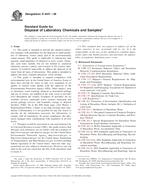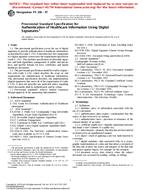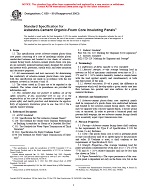1.1 This practice describes a method for direct sampling and analysis of process vents for volatile organic compound (VOC) vapors and permanent gases using a portable gas chromatograph (GC).
1.2 This practice is applicable to analysis of permanent gases such as oxygen (O2), carbon dioxide (CO2) and nitrogen (N2), as well as vapors from organic compounds with boiling points up to 125°C.
1.3 The detection limits obtained will depend on the portable gas chromatograph and detector used. Detectors available include thermal conductivity, photoionization, argon ionization, and electron capture. For instruments equipped with thermal conductivity detectors, typical detection limits are one to two parts per million by volume (ppm(v)) with an applicable concentration range to high percent by volume levels. For instruments with photoionization detectors detection limit of one to ten parts per billion by volume (ppb(v)) are obtainable with a concentration range from 1000 to 2000 ppm(v). The argon ionization detector has an achievable detection limit of one (ppb(v)), while the electron capture detector has an achievable detection limit of one part per trillion by volume (ppt(v)) for chlorinated compounds.
1.4 The applicability of this practice should be evaluated for each VOC by determining stability , reproducibility, and linearity.
1.5 The appropriate concentration range must also be determined for each VOC, as the range will depend on the vapor pressure of the particular VOC.
1.6 This standard does not purport to address all of the safety concerns, if any, associated with its use. It is the responsibility of the user of this standard to establish appropriate safety and health practices and determine the applicability of regulatory limitations prior to use. Refer to Section 8 on Hazards for additional safety precautions.
Product Details
- Published:
- 12/10/1996
- Number of Pages:
- 6
- File Size:
- 1 file , 98 KB


